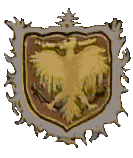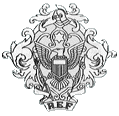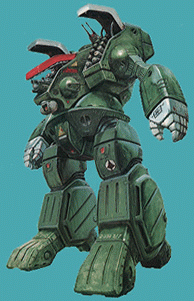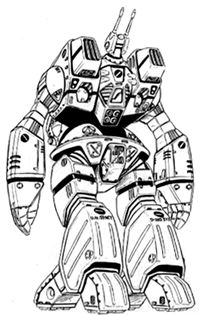

Designation:Main Battle Robot MBR-07 Spartan. |

| 
|

|
||

|
|||||
| Total Height: | 11.3m (ground to shoulder) |
| Total Depth: | 6.1m |
| Total Breadth: | 7.9m |
| Weight: | 29.4 metric tons |

Note that some Spartans, used in civil protection role, were equipped with special clubs. This was after the Holocaust, and the batons were meant to be used against unarmed Zentraedi felons.


The armor on the Spartan is composed of a standard Chobham laminar developed in the late 20th century and improved with the materials science advances made during the Robotech era. This armor was mainly designed to defeat projectiles and other kinetic weapons. The armor stops all small arms, heavy infantry weapons fire, and light mecha-mounted weaponry, and provides fair to good resistance to medium mecha-mounted weaponry, such as the Valkyrie's 55mm APFSDS round.
The Spartan provides full protection from nuclear, biological, and chemical hazards, using an overpressure cockpit environment activated by radiation and hazardous chemical sensors, or manually when biological warfare conditions are anticipated. The internal consumables supplies can provide atmosphere for three days maximum.
The MBR-07 series was originally conceived as a back-up to the MBR-04 project. The MBR-07 was designed by the rival Continental-Kraus Maffei consortium, and initially lost out to the MBR-04 series. However, the need for destroid production was desperate and the Continental-Kraus Maffei group managed to secure minor initial orders on another contract, which later were enlarged after their destroid design had proven itself.
Being designed as a contender to the Tomahawk, the Spartan shared many features which had been part of the original specifications. The fixed armament of the Spartan had nearly identical gun clusters and the same shoulder-launched missile battery. The Spartan lacked the heavy particle cannons in the arms and the anti-aircraft missile box launcher, despite being nearly as heavy as the Tomahawk. However, the Spartan was much faster, and equipped with a gunpod and upper laser turret.
The Spartan was built to a different philosophy than the Tomahawk; at first, this almost was the destroids' undoing, only to turn around and save the design shortly afterwards. The Tomahawk carried slightly heavier armor and more armament, and thus was a better stand-and-deliver defensive destroid, which initially gave it the production contract. The Spartan was designed with speed and flexibility in mind, and much of the mass saved by not including the heavy particle beams had gone into heavier actuators for the legs. In addition, the use of fully functional hands made the use a a gunpod extremely simple, and thus the Spartan could be armed as circumstances dictated and gunpods were available. When shortly after the purchase of the MBR-04 the RDF Army issued a specification for a more mobile and flexible destroid, the builders of the MBR-07 re-submitted their design and won the contract handily. The Spartan was later sold to the other RDF arms as well.
The Spartan gave excellent service throughout the Zentraedi wars. Its one flaw was a lack of sustained long range fire, the three lasers being rather light in yield, and the gunpods dependant on (limited) ammunition. Therefore, the 24 missiles were the main long distance weapons, and the Spartan commonly used its mobility to close with the enemy before engaging him.
Return to UNDF Mecha Index.
Go to Robotech Reference Guide Home Page.
Robotech (R) is the property of Harmony Gold. This document is in no way intended to infringe upon their rights.
Content by Peter Walker and Pieter Thomassen, with Rob Morgenstern